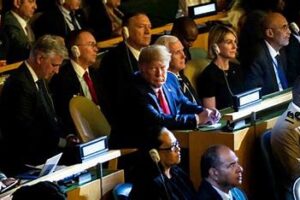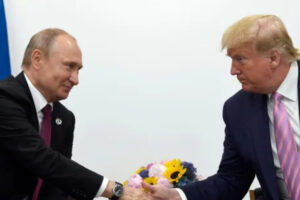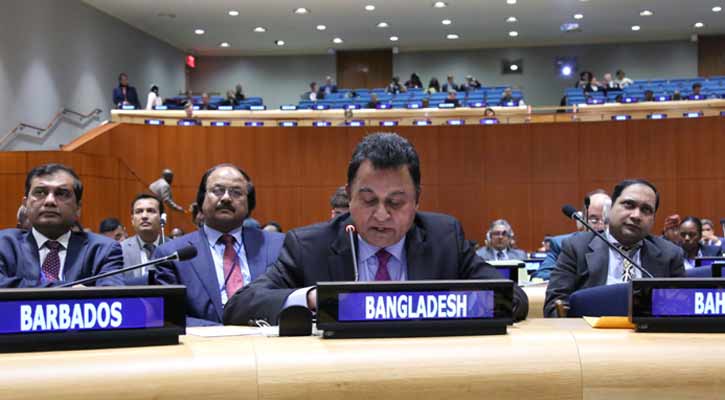After years of increasing assertiveness by Russia’s military in waters and airspace around its borders, a Russian destroyer nearly collided Friday with a US warship in the Philippine Sea.
Each side blamed the other for the episode, which took place in Asian waters that have previously been the site of an intense naval rivalry between the United States and China, but from which Russia, though a Pacific power, had been largely absent.
NATO has repeatedly accused Russia’s warplanes and warships of staging dangerous, threatening maneuvers in the Baltic and Black seas, but the incident Friday was the first potentially catastrophic near miss involving Russian and US naval vessels so far from Russian shores since the end of the Cold War.
The US Navy’s 7th Fleet, which patrols the Pacific, said the Russian destroyer’s crew had navigated unsafely and forced the US warship into an avoidance maneuver. The Americans released video clips to corroborate their version of events.
Russian state-controlled media suggested that the near collision, the second close encounter involving US and Russia forces this week, had been staged by the Pentagon to coincide with a visit to Russia by President Xi Jinping of China, who has overseen a steady increase in economic and military ties between Beijing and Moscow.
China and Russia are not officially military allies, but they have staged joint military exercises and increasingly look to each other for leverage against Washington, with which both have severely strained relations.
Maj Gen Vladimir Bogatyrev, chairman of the National Association of Reserve Officers, told Russian state media that “it is not by chance that these actions happened during the visit to Russia by the head of the People’s Republic of China.”
The United States, he added, had deliberately provoked the incident in the Philippine Sea in an effort to “demonstrate to us the supposed strength of the American fleet and lawless behavior in the wide expanse of global seas.”
But he also hinted that Russia was not merely an innocent bystander.
“The protest of our sailors was completely justified,” he said, without specifying what “protest” he was referring to.
A US official said the two ships nearly collided about 160 miles south of Okinawa, a Japanese island on which the United States has had an air base and various other military facilities since the end of World War II. Russia, which has declined to give up territory seized from Japan in 1945, has no quarrel with US facilities in Okinawa.
The presence of Russia’s navy south of Okinawa — more than 1,200 miles from the Russian Pacific Fleet’s home port in Vladivostok — suggested less an effort to assert any Russian claims in the area than a gesture of support for China. Beijing has long balked at the reach of US naval power and feuded for decades with Japan over uninhabited islands that the Japanese call Senkaku and the Chinese Diaoyutai.
The US Navy said the near collision took place around 11:45 am local time as a result of an “unsafe and unprofessional” move by a Russian destroyer, the Admiral Vinogradov, which came within 50 to 100 feet of the guided missile cruiser Chancellorsville, according to a statement. The cruiser had to quickly maneuver to avoid a collision, the Navy said.
Cmdr Clayton Doss, a spokesman for the 7th Fleet, said in the statement that the Russian destroyer had made an “unsafe maneuver” against the Chancellorsville, “putting the safety of her crew and ship at risk.”
Russia gave an entirely different version of events, with the Pacific Fleet press service telling the state-run news agency Tass that the US vessel had hindered the passage of the Admiral Vinogradov, forcing it to perform a dangerous maneuver to avoid a collision.
“The US cruiser Chancellorsville suddenly changed its course and crossed the Admiral Vinogradov destroyer’s course some 50 meters away from the ship,” the press service said, according to Tass. “In order to prevent a collision, the Admiral Vinogradov’s crew was forced to conduct an emergency maneuver.”
Acting US Defense Secretary Patrick Shanahan said the United States would lodge a formal diplomatic protest with Russia, objecting to the “unsafe and unprofessional” behavior of the Russian destroyer.
“We’ll have military-to-military conversations,” Shanahan told reporters at the Pentagon, adding that the encounter “will not deter us from conducting our operations.”
The US Navy released two video clips of the events on its YouTube channel, including one that showed the Russian vessel quickly pulling close alongside the Chancellorsville. Also visible, however, were what appeared to be sunbathing Russian sailors on deck of the Admiral Vinogradov, which suggests the Russian vessel was not on high alert at the time and was not engaged in a planned provocation.
The military encounters have become a common feature with tensions heightened between the two countries. In 2016, a Russian frigate came within several hundred yards of a US cruiser, part of an aircraft carrier strike group responsible for attacking Islamic State targets in Iraq and Syria, while it patrolled in the Mediterranean Sea.
Relations have grown increasingly rocky because of anger in the United States over Russia’s meddling in the 2016 presidential election, its annexation of Crimea and its influence in the conflicts in Syria and Venezuela.
Bryan McGrath, deputy director at the Hudson Institute’s Center for American Seapower, said that while these episodes were not common, they will only increase in the future.
“The Russians are using their Navy to send us a political signal, albeit one without nuance,” McGrath said in an email. “We use our Navy to send political signals every day — it is something for which navies are particularly well-suited.”
On Tuesday, the US Navy’s 6th Fleet said that a P-8A Poseidon aircraft was intercepted by a Russian fighter jet three times in a period of about three hours while flying over the Mediterranean Sea.
The 6th Fleet said in a statement that the first and third intercepts were safe, but it expressed concern about the second, citing what it said was a “high-speed pass” that caused turbulence that put the pilots and crew of the US aircraft at risk.
“While the Russian aircraft was operating in international airspace, this interaction was irresponsible,” the Navy said in the statement. “We expect them to behave within international standards.”






















